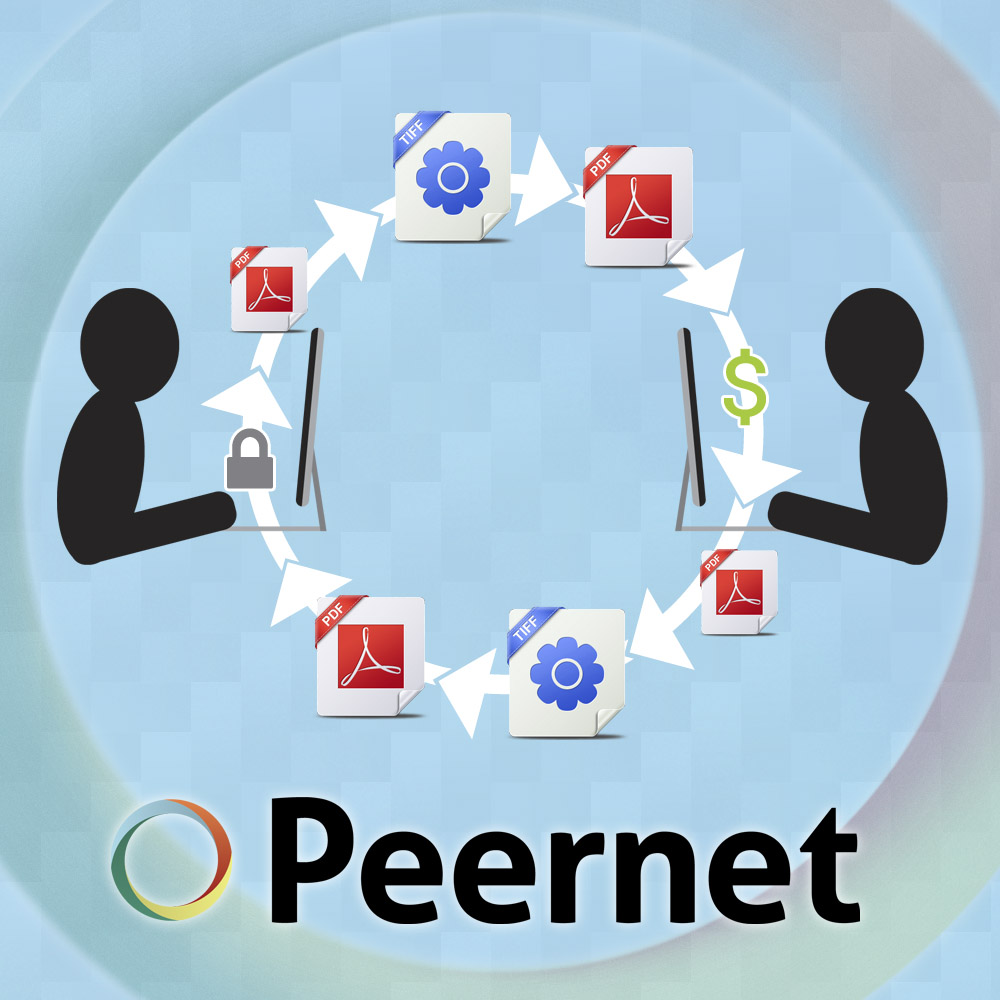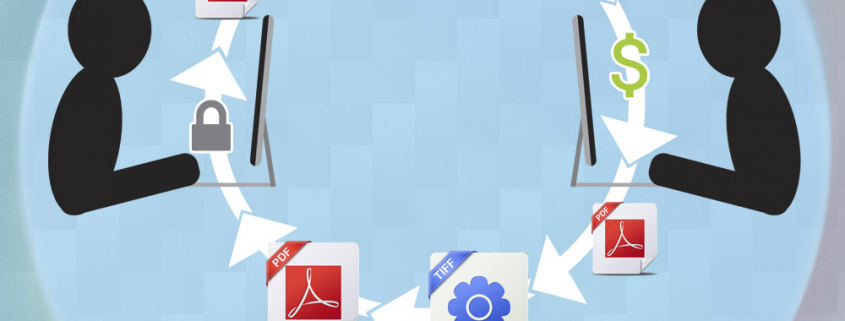7 Keys to a Successful Enterprise File Conversion Transition

Being a part of a large organization presents its own challenges and opportunities when it comes to implementing a strategy for efficient digital document management system. Primarily, the size and scale of the organization will inform the route you take in terms of software and solution section. Training and protocol is also an obstacle, albeit one that can be significantly minimized as part of a cohesive plan. As for the benefits of moving more documentation to the digital realm, they are plain to see.
Organizations in all sorts of industries are already well on board with electronic document management practices, proving their effectiveness. For enterprise-scale organizations, replacing even a small percentage of your documentation with digital equivalents can add up to significant savings in terms of costs, time and resources.
When you see the need to start making more use of digital documentation, the best transitions start with thinking about all the possible considerations. Here are 7 things to think about to ensure a successful undertaking to make greater use of digital documentation in your organization.
1. Get the whole management team on-board, and buy-in from the employees.
Committing to eliminating some of your company’s paper waste and transitioning to a new era of digital documentation is the smart and prudent move at this point in time. The benefits are numerous. For a successful plan to take shape and be implemented, these favorable points must be communicated accurately. Here is a brief summary of some of the main benefits of document digitization, which you can use to get everyone on-board with an accelerated transition to utilizing digital documentation.
- It can save significant time and resources for your employees.
- It can save money from your company’s bottom line over the long-run.
- It can help your employees collaborate more easily with each other.
- It can help improve your company’s customer service, by providing more easily searchable and retrievable information.
- It can open up new possibilities for your team to work from different locations.
- It can help your company become more environmentally conscious.
2. Decide on the best file format(s) for your company’s particular needs.
Choosing the right file format or formats is a fundamental part of a successful transition to start using more digital documentation in your organization. Making the right choice will make everything else easier, and making the wrong one can hinder your company’s availability to productively make the switch.
A majority of enterprise-level organizations that make significant use of digital documentation in this manner make either PDF files or TIFF files the bedrock of their digital filing systems. Both formats have benefits and drawbacks; for more information, please see our post on PDF vs. TIFF.
3. Don’t downplay document security issues; consult with internal or external IT for best solutions.
If you work in a large facility, you probably have some physical security measures in place at your office building or place of work. They may include barriers to prevent entry, locks and/or passwords to view certain physical files or reach certain parts of the building. The same principles should be applied to your digital documentation. Some of the primary things to think about include:
- Considering the various security features available in each of the main digital document formats used for record keeping in a corporate, institutional and/or enterprise-type environment.
- Making sure that employees are not tempted to expose your company’s files to untrusted locations. For example, without an enterprise file conversion protocol in place, they may be tempted to use unsafe, free document conversion websites.
- Ensure employees are familiar with the basics of strong passwords – a basic preventative step that nonetheless provide a vital line of security for your customers or clients’ sensitive information and records.
- Make sure that digital documents are securely backed up on a regular basis.
4. Ensure a solid organization and naming structure is in place for files.
As with security, many of the same principles from physical, paper document organization apply with digital document organization. You want to establish a clear structure of folders, and where users can expect to find things. After all, one of the main benefits of digital documentation over physical printed documents is the ability to easily and quickly retrieve documents as needed. Here are a few of the foundational elements of establishing this.
- The naming structure of your documents should be consistent across the board, to ensure that the files are easily scannable, and the correct file, easily retrievable.
- It should be a simple enough structure that it’s easy to follow and not bothersome to follow. If it’s annoying to do so, employees likely won’t abide when working with their own files.
- You also may want to consider using some sort of date notation within the name of the files themselves. This can make it easier to sort through, depending on the overall setup you end up going with.
5. When choosing your format, consider the importance of “searchability.”
One of your main determinants between choosing either PDF, TIFF or a combination of both file types should be how you and your team plan to search for information within documents. To wit, if you want to be able to easily search for specific text within documents, then you might want to consider using a format such as vector PDF – which renders individual text characters, and allows the user to do a standard text search to look for certain passages. A raster PDF, conversely, renders all text as images, so it doesn’t give you the same ability. With both types of the PDF format, however, there can be metadata embedded within the document itself for easier searchability and to allow the user to find the document they’re looking for. TIFF files can be integrated with optical character recognition (OCR) features that, as with vector PDFs, allow you to search for specific text characters within the file.
All in all, it’s important to be familiar with precisely what each format offers in terms of search ability and use that as a factor in your decision on file formats.
6. Consider the benefits of automating the file conversion/file creation process.
For enterprise-scale organizations, the best option is often to set things up-front and then let the process run automatically. This is definitely the case for organizations with an ongoing need for file conversion to TIFF, conversion to PDF, or other formats. Automating the process has several big advantages – primarily, the fact that the resources that would otherwise be spent manually converting or creating files are now handled by the automated file conversion solution you’ve put in place.
For this purpose, PEERNET’s Document Conversion Service is the industry-leading solution that’s available for enterprise organizations today. DCS is built with enterprise-scale document conversion in mind – scalable, fast, and boasting a robust set of features that make it a powerful asset for your organization’s document conversion needs.
7. Choose the right software for your organization to convert files to your chosen format.
Finally, choosing the right software can make all the difference in ensuring your enterprise file conversion efforts are a resounding success. They are the tools upon which success or difficulties will be built upon. Here is a brief look at some of the tools offered by PEERNET that have been used by previous enterprise and institutional customers to great effect when either moving to increase their efficiency with processing and creating digital documentation, or even starting from scratch.
To combine edit, and merge files into new PDFs: PDF Creator Plus. This is a software solution, offering functionality quite similar to Adobe Acrobat – at a price that’s actually quite a bit more cost-effective. If your organization has a regular need to create PDF documents from scratch by combining different elements, you can learn more about PDF Creator Plus here.
For Simple PDF Conversion from other Windows file formats: PDF Image Printer. This is a virtual printer that allows users to convert a document to PDF through the standard Windows print menu. Extremely easy to use, so it doesn’t require a great amount of training on the part of your employees. They just navigate to the PRINT menu as they ordinarily would, and select the PDF Image Printer instead of a physical printer. Their converted file is then simply outputted to the specified folder.
For Simple TIFF Conversion from other Windows file formats: TIFF Image Printer. This virtual printer offers the same functionality as described in PDF Image Printer above, except that it outputs converted TIFF files.
To convert to both PDF or TIFF: Raster Image Printer combines the functionality of TIFF Image Printer and PDF Image Printer into one sleek, convenient software package.
For on-demand enterprise file conversion: File Conversion Center. This is a time-saving desktop application that converts your Office, PDF, Postscript, HTML, and more file types into TIFF, PDF, JPEG and other formats. Features include the ability to run scheduled conversion tasks, command line interface, drag and drop conversion bins, and right-click-to-convert-functionality.
For enterprise-scale automated, batch file conversion: Document Conversion Service. As mentioned above, DCS is an industry-leading conversion solution that allows you to convert from a huge range of file types into PDF, TIFF, and other image formats. Features like Workflow integration, customizable drag and drop folders for conversion, and the ability to convert files 24/7 in the background make this the automated batch file converter of choice for organizations with a need for ongoing document conversion and creation.
Still Not Sure? Please take a couple of minutes to watch the brief video below, which runs through all PEERNET product offerings and should help you determine which product might be right for your enterprise file conversion needs.
And if you still need help with choosing software for your organization, whether you work in a large institution or a small business, you can always contact us for some advice and guidance.



